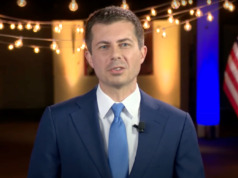The business aviation industry, which began the year with optimistic sales and growth expectations, was reeling less than a month into spring as travel restrictions and fears of the Coronavirus – along with widespread economic uncertainty – sharply reduced demand for business air travel.
The impact on business across the U.S. has been a devastating one-two punch. First came wide-ranging business closures mandated by state and local governments to help curb the spread of COVID-19 by reducing public contact. Second, even businesses and industries permitted to remain open have had to resort to layoffs and employee furloughs after some workers were diagnosed with the virus.
In addition, many businesses have decided to purposely reduce output because of falling demand for a wide range of products – automobiles, homes, appliances, airplanes, furniture, and even consumer staples like soft drinks.
Low oil prices traditionally bode well for transportation companies. But worldwide demand for oil plunged so far and so quickly oil producers were facing a storage space crisis that threatened to worsen in coming months, and oil price futures were trading below zero.
If all that weren’t dire enough, the Trump Administration was continuing to issue a daily scramble of mixed messages and outright falsehoods about the availability of virus test kits. State governors and many health care officials have decried the lack of test kits. On April 17, the American Medical Association cited “four essentials that must be in place” before relaxing stay-at-home orders: minimal risk of community transmissions; a robust, coordinated, and well-supplied testing network; a well-resourced public health system for surveillance and testing; and well-resourced hospitals and health care workers.
But despite test kits still being in critically short supply, President Trump and the governors of some states were urging businesses to begin reopening in May in an attempt to jump-start the economy.
All of the negative news manifested itself in a huge drop in demand for charter aircraft flight. The National Business Aviation Association said April 21: “charter operators across the country are reporting sharp drop-offs in flight requests and activity, in some cases by more than 75% over the same period last year.”
Flight tracking numbers from FlightAware tell the same story. U.S. business aircraft flights in the week of April 15, 2019 (Monday-Friday) averaged 11,236 per day, with a high of 12,966 on April 18. For the week of April 13, 2020, (Monday-Friday) business aircraft flights averaged 3,519 per day, with a high of 4,054 on April 17 – and a low of 2,803 on April 13, 2020.
A check of FlightAware’s live tracking data by aircraft manufacturer and model on April 21, 2020 at 1100 EDT revealed fewer than 200 business jets in the air over the continental United States. Worldwide civil aircraft movements of all types are off by approximately 80 percent since the beginning of 2020.
NBAA said it welcomed news that the U.S. Treasury Department had begun making payments “to many of the small and mid-sized general aviation air carriers, including FAR Part 135 charter operators struggling with the unprecedented financial challenges raised by the COVID-19 pandemic.”
But NBAA noted those government payments may be used only for “employee wages, salaries and benefits,” leaving operators to find ways to cover an array of fixed costs, including aircraft and facility leases, training, and maintenance, all while generating much less revenue.
It will take many months for business aviation flight activity to return to pre-COVID-19 levels. There will probably be considerable consolidation among charter operators. But once people begin to feel safe to travel again, business aircraft will still be the most convenient, safest, flexible, and fastest way to get where you need to be. Business aviation permits you to select your seatmates and set your own schedule. It will help the economy – and the country – recover. BAA
David Collogan has covered aviation in Washington, DC for more than four decades. This award-wining journalist is known as one of the most knowledgeable, balanced, wary, and trusted journalists in the aviation community.





